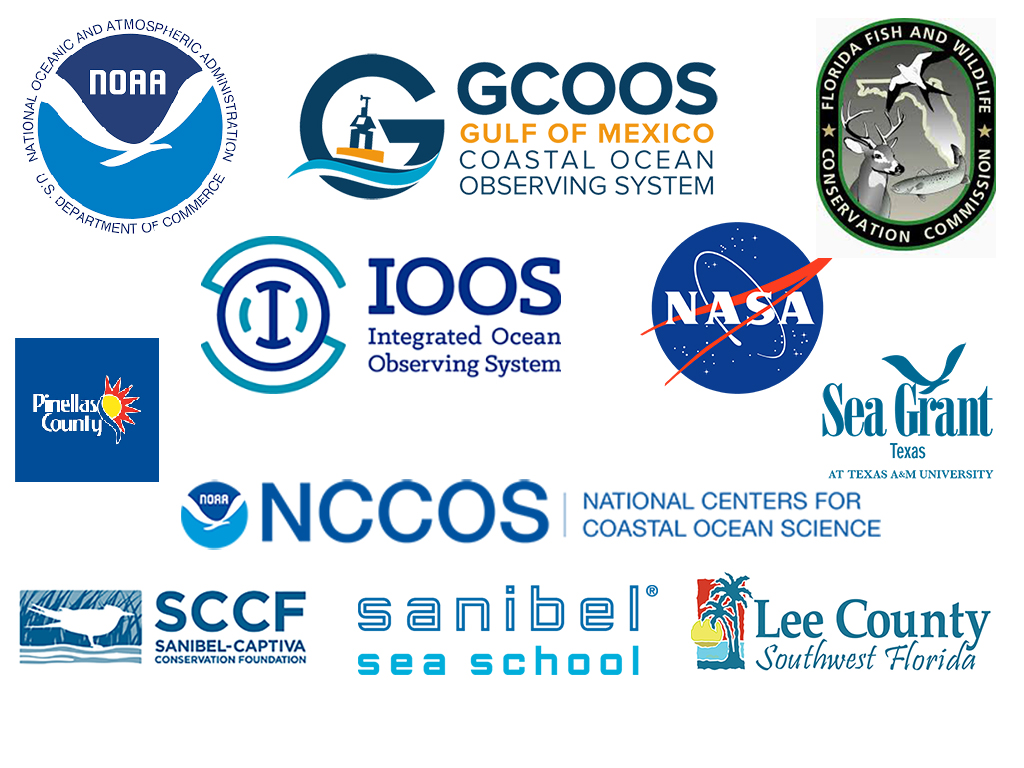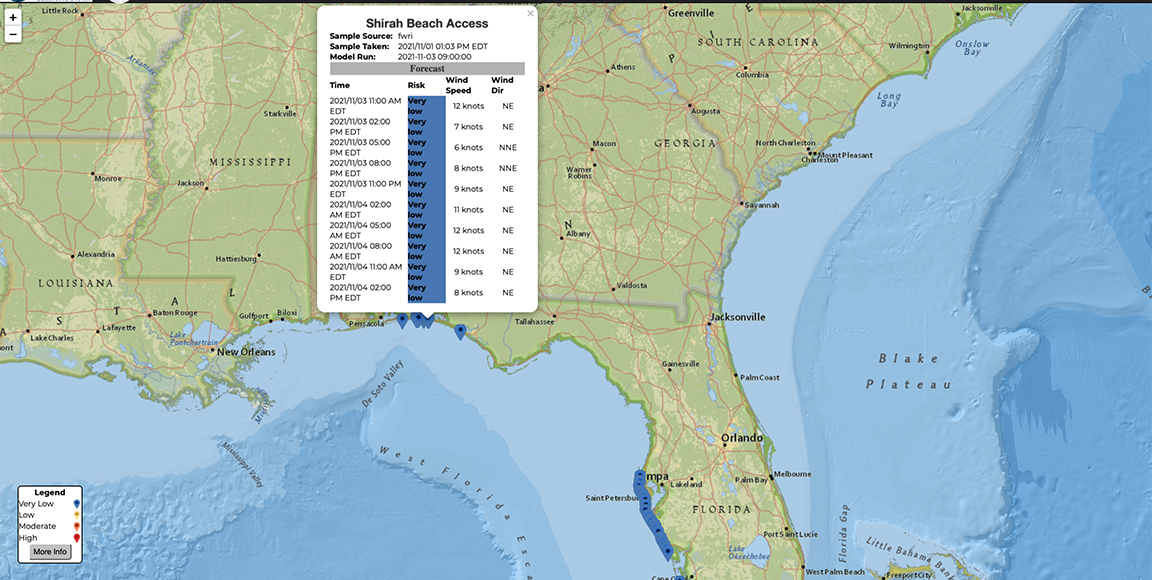
The Red Tide Respiratory Forecast (RedTideForecast.com) — developed by the National Oceanic and Atmospheric Administration (NOAA) and the Gulf of Mexico Coastal Ocean Observing System (GCOOS) — has expanded to the Panhandle and is now also available to Spanish speakers, GCOOS announced Thursday.
The Forecast allows residents, tourists, and businesses along beaches to know whether respiratory impacts from red tide are expected to occur in their location and what the level of impact is expected to be. The Forecast system is activated when red tide is present along beaches.
“We want to ensure that all communities have access to important information to protect them from the health effects of red tide,” said GCOOS Senior Advisor Dr. Barbara Kirkpatrick, who led development of the Forecast with Dr. Richard Stumpf of NOAA and its National Centers for Coastal Ocean Science (NCCOS), and many other state and local partners. “That’s why it’s not only important to expand our geographic coverage areas, but to expand our reach to other types of communities as well. That’s why we created a version for Spanish speakers.”
- The URL for the Spanish-language version of the site is PronosticoMareaRoja.com
Red tide has been present on Florida’s west coast since December 2020, affecting communities sporadically and oscillating between mild and severe. The Red Tide Respiratory Forecast tracks the bloom intensity and predicts potential respiratory impacts from the toxic aerosols in three-hour increments at individual beaches.
Since red tide was first reported in the Panhandle in September, GCOOS has been working to expand the team of volunteers to that part of Florida. GCOOS hosts the Forecast and organizes the volunteer team that collects data used by NOAA to produce it.
The Panhandle expansion is made possible thanks to data collected by Florida’s Fish and Wildlife Conservation Commission’s Fish and Wildlife Research Institute (FWC-FWRI) and new high school volunteers Cassie Stanish and Sailor Reynolds from the Navarre Beach Marine Science Station.
The Red Tide Respiratory Forecast team has also grown in Sarasota County, where members of the Florida Department of Health are now gathering water samples and sending data as part of Florida’s Healthy Beaches Program. Their efforts help expand the Forecast reach in Sarasota County.
“Given the number of beaches we have in Florida, the Red Tide Respiratory Forecast really depends on a committed team of volunteers to help us gather the data we need to keep people safe,” said GCOOS Volunteer Coordinator Grant Craig. “It’s great that Cassie, Sailor and the Florida Department of Health are joining the team!”
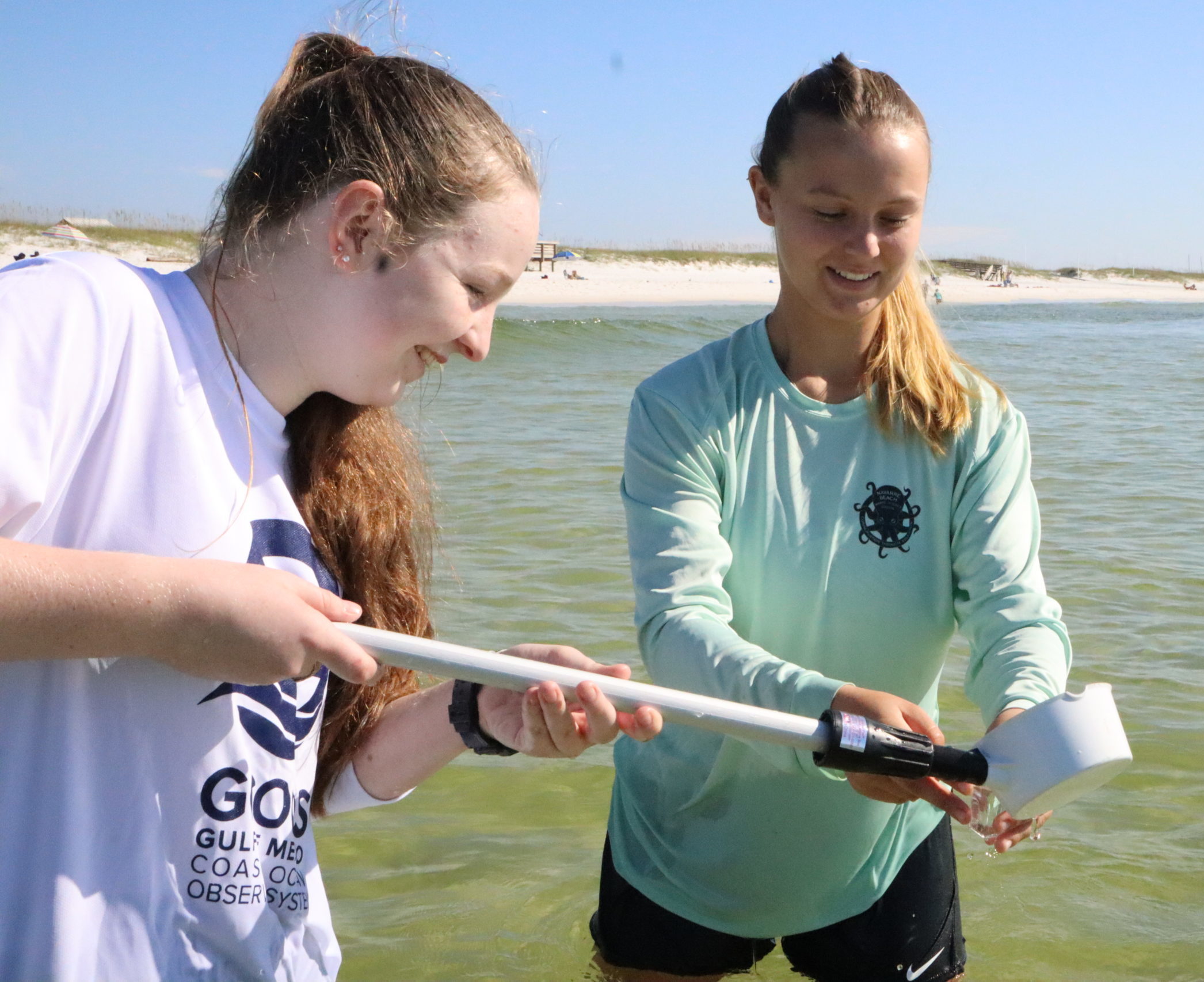
Santa Rosa County School District students Cassie Stanish and Sailor Reynolds are Red Tide Respiratory Forecast volunteers.
What Are Red Tides?
Red tides in the Gulf of Mexico are caused by Karenia brevis, which has toxins that can be harmful to humans. Most people experience red tide toxins as minor respiratory irritation — coughing, sneezing, teary eyes and an itchy throat. Typically, these symptoms go away when they leave the beach.
But people with chronic lung problems like asthma and chronic obstructive pulmonary disease (COPD) can have more severe reactions when they breathe in airborne red tide toxins — even ending up in the emergency room. Health officials advise these people to avoid areas experiencing red tide altogether, take all medications as prescribed and have access to rescue inhalers. People with chronic lung disease should leave the beach if they begin experiencing respiratory problems, even if red tide is at very low or low concentrations.
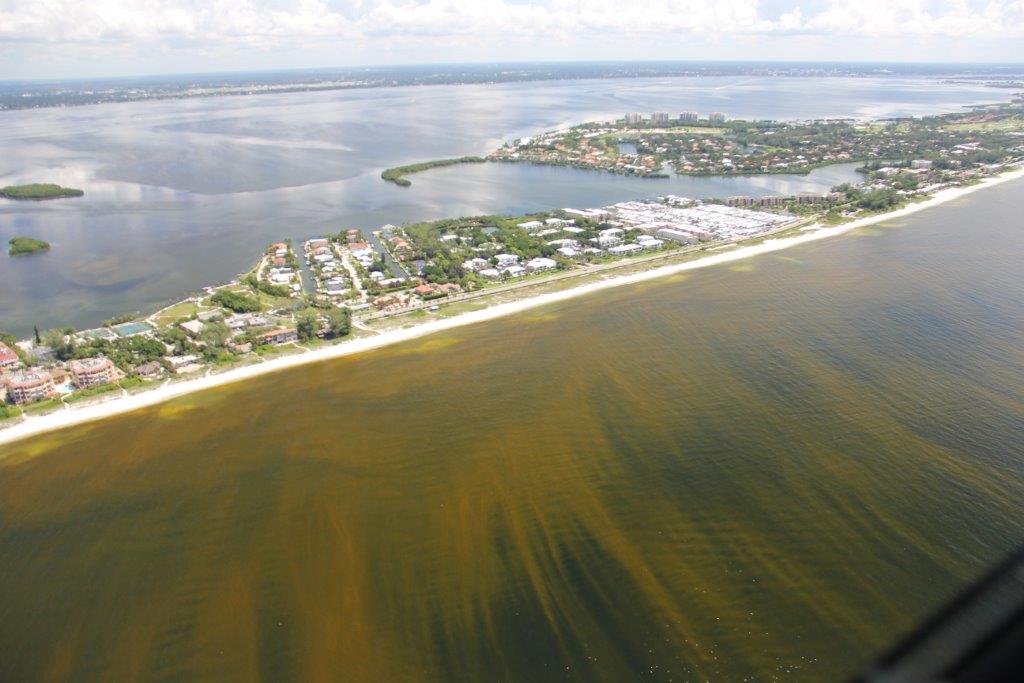
Image by Mote Marine Laboratory
How Are the Forecasts Created?
A volunteer using a low-cost portable microscope system called a “HABscope” (developed by GCOOS Research Specialist and Product Developer Bob Currier) collects a water sample from a designated location, then uses the adapted microscope to take a video of the slide and transmit the data. A computer using AI technology “reads” the slide and detects whether red tide cells are present. That information is then combined with additional data on water currents, wind speed and direction and other information by NOAA to develop the Red Tide Respiratory Forecast.
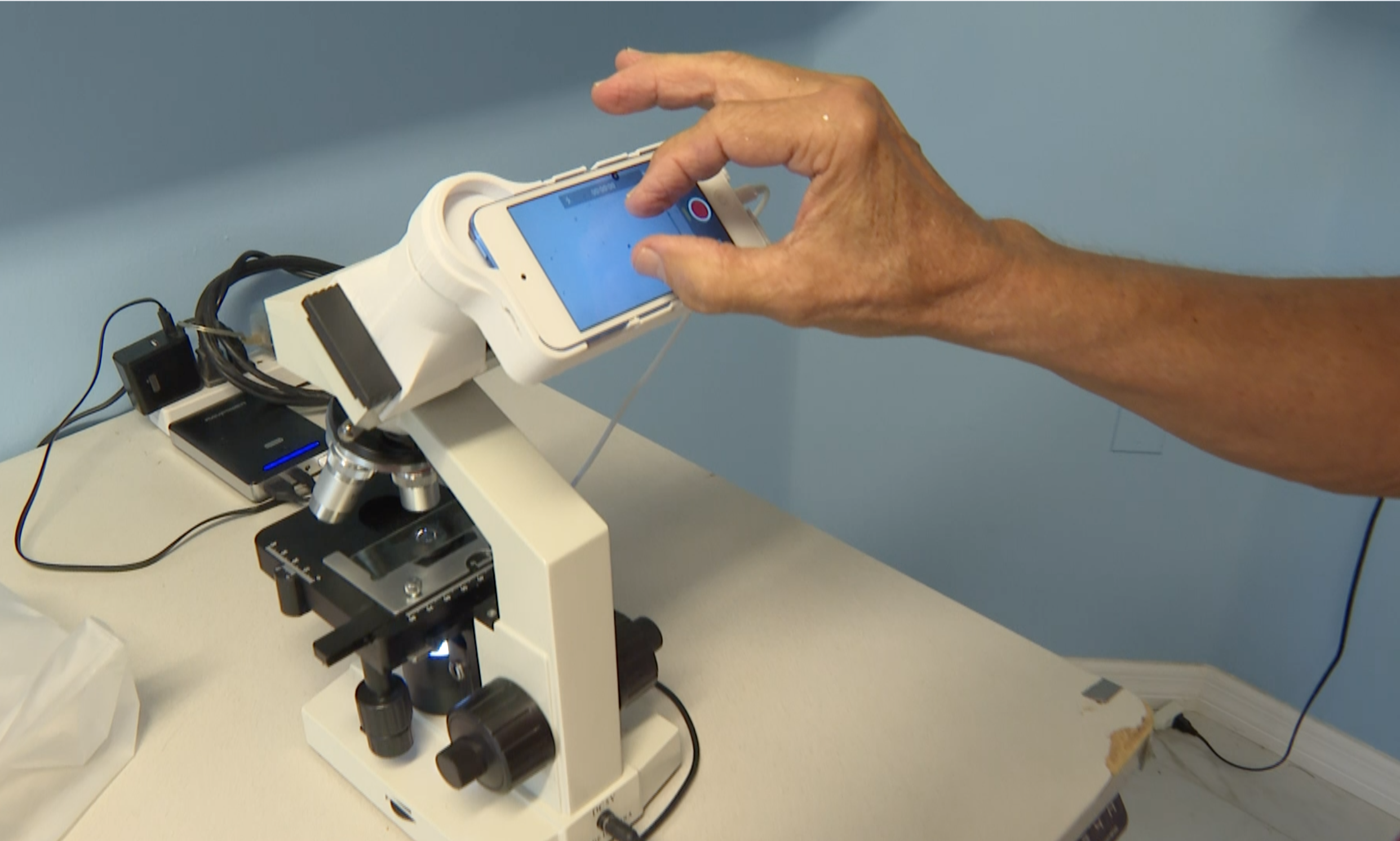
Who Are the Forecast Partners and How is it Funded?
The Forecast was initially developed by the National Oceanic and Atmospheric Administration’s (NOAA) National Centers for Coastal Ocean Science in partnership with GCOOS, the Florida Fish and Wildlife Conservation Commission-Fish and Wildlife Research Institute (FWC-FWRI) and Pinellas County Environmental Management. The forecast was developed through funding from the NASA Health and Air Quality Program. Additional funding has been provided by NOAA-NCCOS through the multi-year “Monitoring and Event Response for Harmful Algal Bloom (MERHAB)” program and the Forecast now includes on-the-ground support from many local partners.
Most recently, the Forecast has received a $150,000 grant from NOAA to help train citizen science volunteers and pay for the equipment they need to support the forecast.
